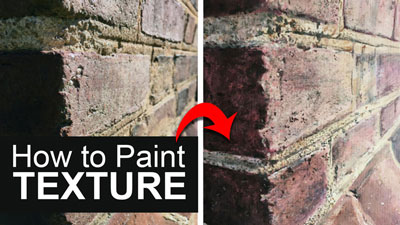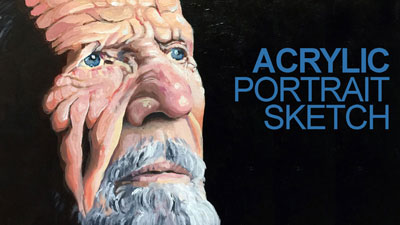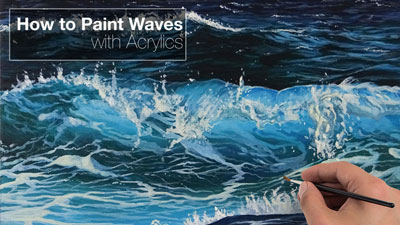Painting with Mediums
Acrylics are one of the most versatile painting mediums that an artist can work with. They can be thinned to behave like watercolors or they can be applied thickly to create impasto effects.
They dry very quickly, allowing the artist to layer colors quickly. This quick drying time however can be viewed as a disadvantage. Blending colors, for example, must be done quickly before the paint has time to dry.
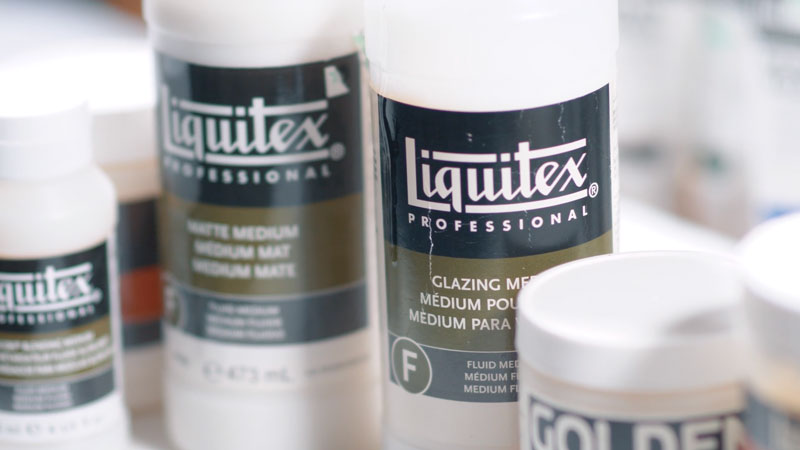
Another advantage of working with acrylics is the broad variety of mediums and additives that can be used with the paint to alter how it behaves and how it appears in the artwork.
In fact, there are so many products out there that change the behavior of acrylic paint, it’s quite overwhelming.
In this lesson, we’ll explore the differences between mediums and additives, what mediums you may need, the ones you can live without, and the differences between the mediums that are commonly used with acrylics.
The Difference Between Acrylic Mediums and Additives
Let’s start by first determining the differences between mediums and additives. In order to fully understand the difference, we must look at the basic ingredients found in acrylic paint.
Like all paints, acrylic paints are made up of three basic ingredients.
Pigment – Pigment is what gives paint its color. Pigment can be harvested from natural resources or it can be man-made. Pigment is fairly universal meaning that the same pigments are used in watercolor, oils, pastels, and acrylics.
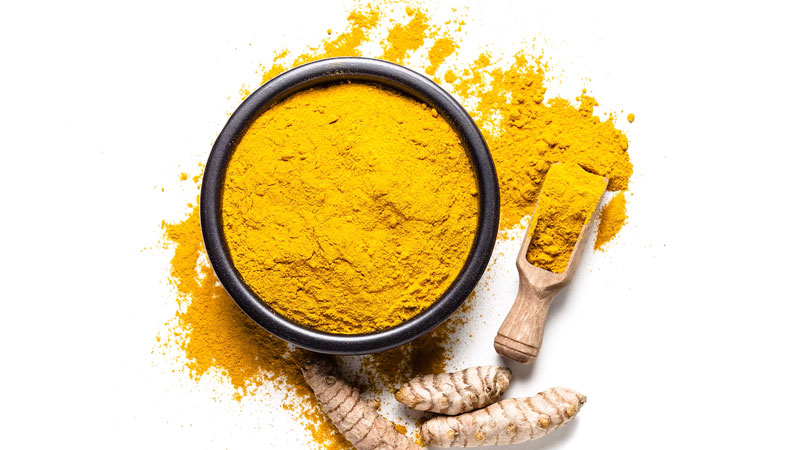
Binder – Binder is the material that holds the pigment in place. The binder in acrylic paint is an acrylic polymer. When dry, the binder in acrylics also makes the paint water-proof – just like any other plastic – and ensures that it “sticks” to the surface in which it is applied.
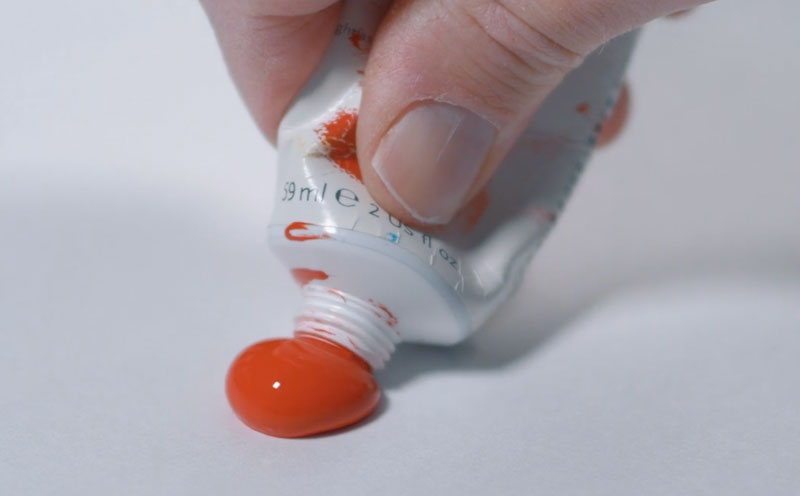
Solvent (or Vehicle) – Solvent affects the fluidity of the paint. Solvents vary between different types of paint. The solvent for acrylics is water. When water is combined with the binder, it allows the paint to be spread over the painting surface.
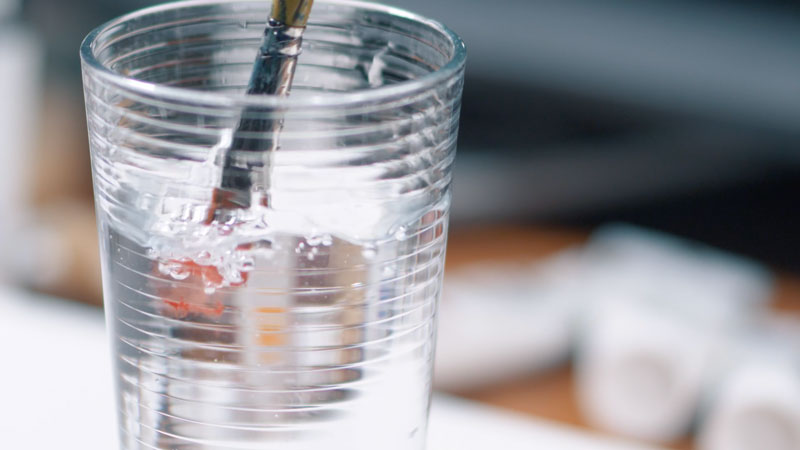
As acrylics dry, the solvent (water) evaporates and the binder hardens resulting in the finished surface.
As you can see, the binder is very important. It controls many of the aspects of how the paint behaves, including how it “binds” to the surface in which it is applied.
And this is where we see the clear difference between acrylic mediums and additives. Acrylic mediums have an acrylic binder, but additives do not.
Acrylic Mediums
Paint manufacturers produce a broad range of medium products. And like all of the inventive colors that they create, the artist does need all of them. Most of the basic mediums often perform “double duties”, so having many different forms of acrylic mediums may be redundant.
All acrylic mediums generally fall into one of two categories – fluid or gel. Many of the mediums we’ll discuss here can be had in both fluid and gel forms.
Gel Mediums
Gel mediums, as the name implies, are acrylic mediums that are thick in consistency. Often, these mediums are found in small tubs instead of containers that encourage the artist to squeeze out the medium. These mediums are best removed from their containers using a palette knife.
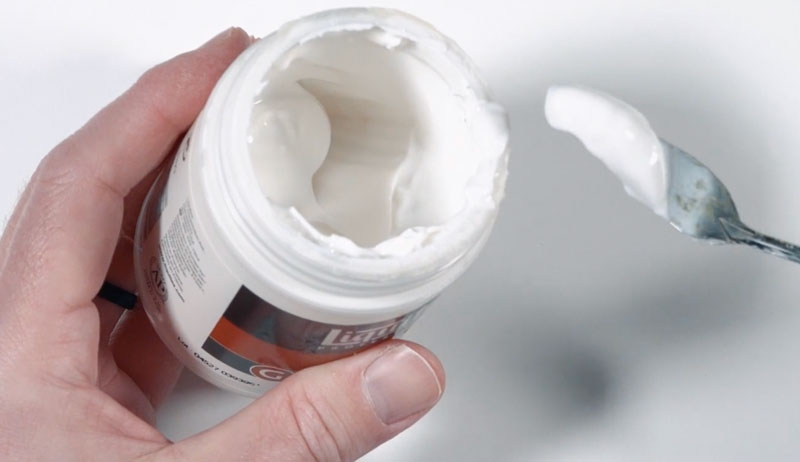
Some paint manufacturers, like Liquitex, include the type of medium on the label. A large “G” can be found on the label indicating that the medium in question is a “Gel” medium.
They also include a large “F” on their fluid mediums – but more fluid mediums in a moment.
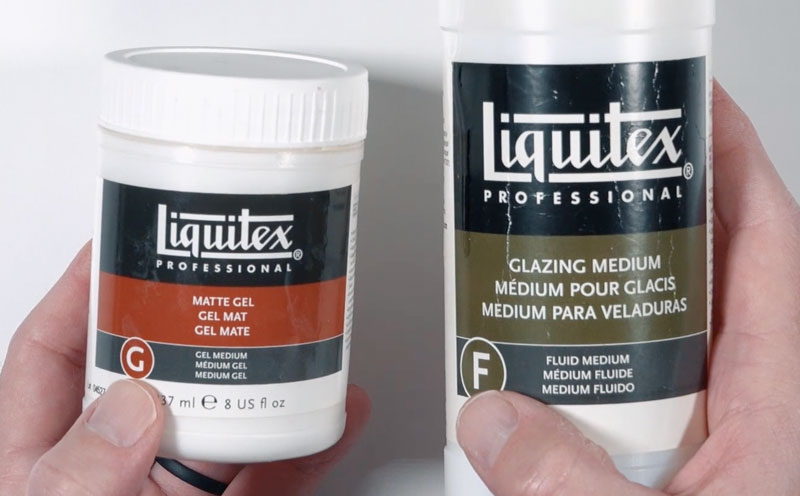
Gel mediums can perform a variety of tasks and affect the way the paint behaves in different ways.
All gel mediums will extend the paint, while slightly affecting the intensity of the color. The more medium you add to the paint, the less intense the color becomes. With most mediums, the desaturation of color is barely visible.
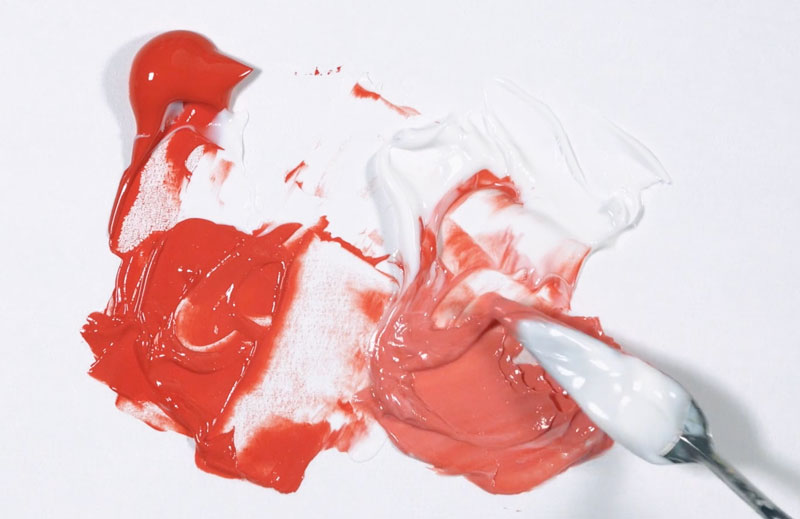
However, if you add a lot of medium with very little paint, this lessened intensity is obvious. This is an advantage if you plan on creating a glaze to layer over colors.
See also: Acrylic Gel Transfers
Gloss Medium
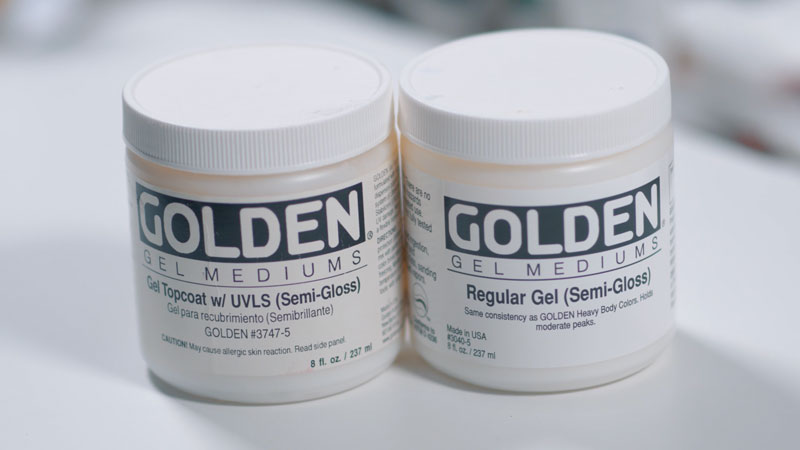
When gloss medium is added to acrylic paint, the finish of the paint changes. As the name implies, gloss mediums make the resulting image shiny, as if a gloss varnish has been applied.
When to Use:
- Use this medium if you want a shiny appearance to the finished painting
- Subtle Impasto effects
- Increasing the life of your paints by altering the pigment to binder ratio
- As a shiny glue – (Decoupage)
- Acrylic transfers
Matte Medium
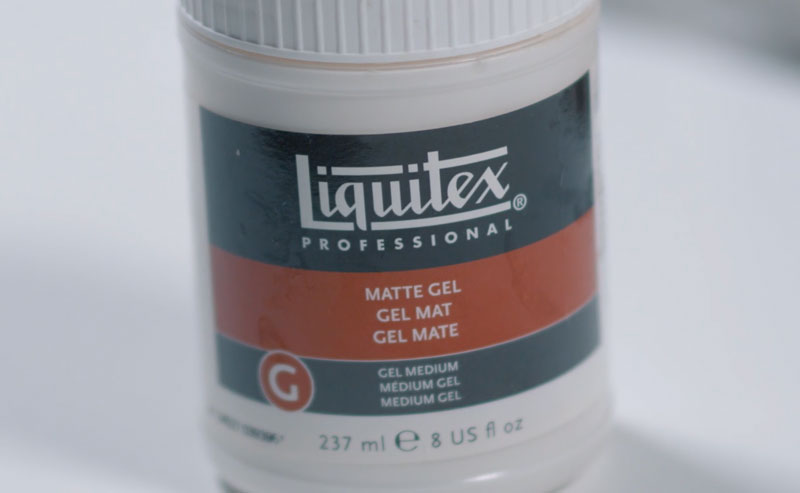
Matte medium tones down the natural sheen of acrylics, resulting in a duller appearance. This gel medium is the most versatile of the bunch.
When to Use:
- Use this medium if you want a duller appearance to the finished painting.
- Subtle Impasto effects
- Increasing the life of your paints by altering the pigment to binder ratio
- As a duller glue – (Decoupage)
- Acrylic transfers
Modeling Gel
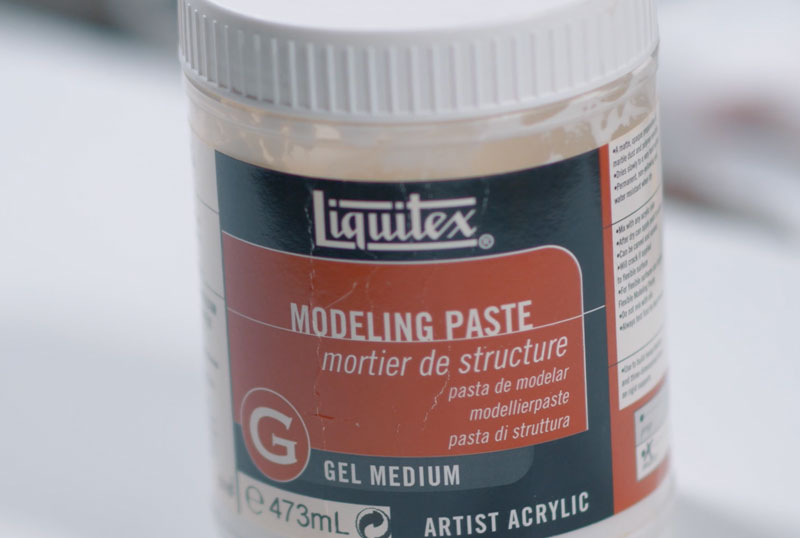
Modeling gel is a gel medium that greatly increases the body of the paint. It can be sculpted as it dries using a palette knife or a brush. This medium is best for creating pronounced impasto effects.
When to Use:
- Heavily textured paintings with pronounced impasto effects
Of course, there are plenty more gel mediums available, but having just these three is really more than you will ever need.
Now let’s have a look at fluid gel mediums…
Fluid Mediums
Fluid mediums are thinner than their gel counter-parts. Most fluid mediums are found in containers that are meant to be poured. While gel mediums make the paint a little thicker or do little to change the consistency of the paint, fluid mediums typically increase the fluidity.
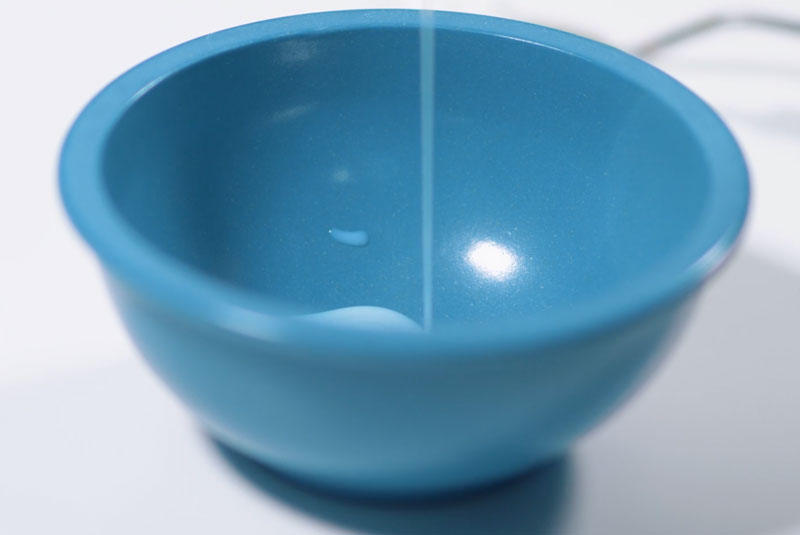
As we discussed before, Liquitex labels fluid mediums with a large “F” on the label. Not all manufacturers label their mediums in this way, however.
Fluid mediums are available in the same sheens as their gel counter-parts. You can find fluid mediums in gloss, matte, and semi-gloss finishes.
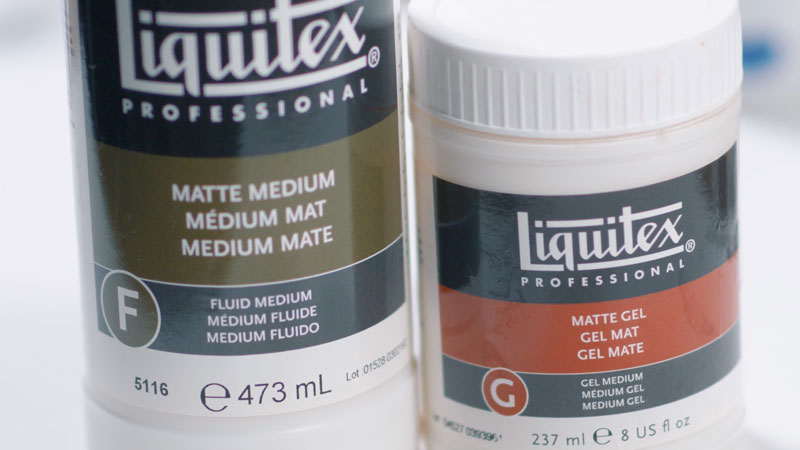
When to Use:
- These generic fluid mediums are best used in situations in which you want to improve the flow of the paint without sacrificing saturation loss.
There are two other fluid mediums that are very beneficial to the acrylic painter since they seemingly change the behavior of the paint itself.
Glazing Fluid
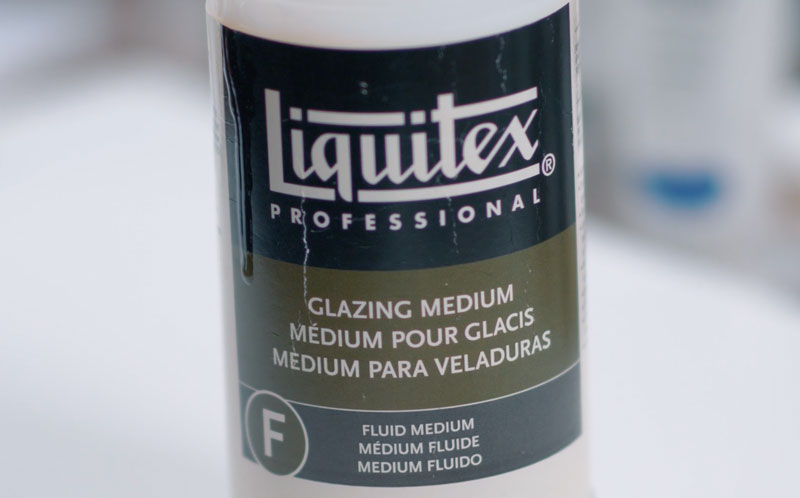
The first fluid medium we’ll discuss is glazing fluid. Glazing is the process of layering semi-transparent layers of color over previously applied colors. The color or value underneath shows through the translucent layers resulting in an optically mixed or perceived color.
We see glazing utilized most often when the process of indirect painting is used. In this process, a painting is developed by first creating an underpainting – perhaps consisting of values of gray.
Translucent colors are then glazed over the top in layers. The values established underneath still show through, but the glazed colors on top are also visible.
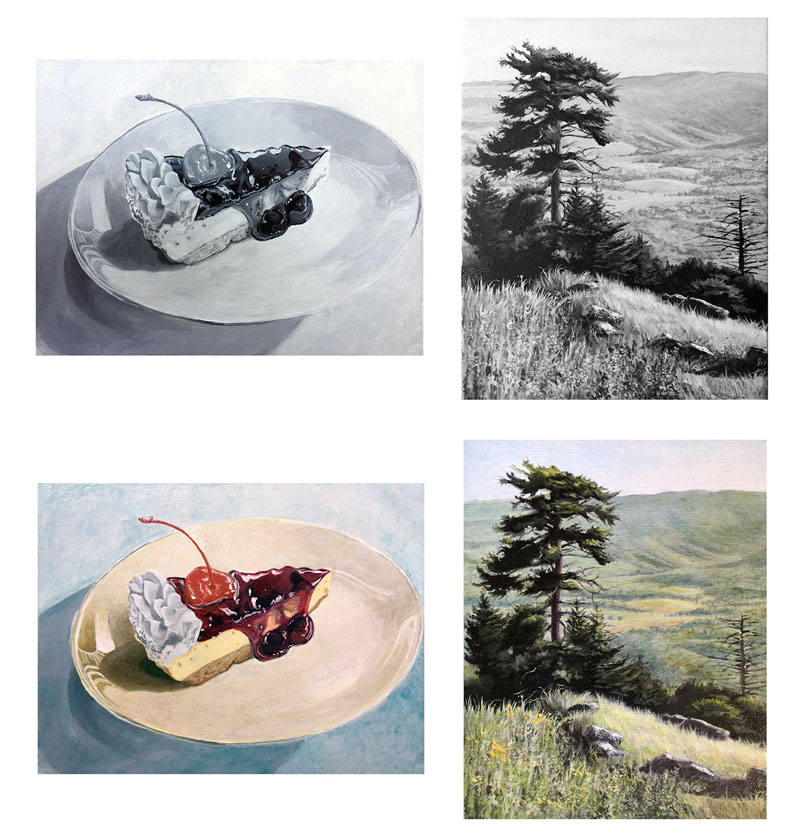
See also: Glazing with Acrylics
Glazing can be tricky and requires practice, but it gives the artist the highest level of control over the values and colors.
You can create a glaze by simply adding water to the paint. However, when you add any additive, including water, you weaken the binder. If the binder becomes too diluted, your paint will not adhere to the surface.
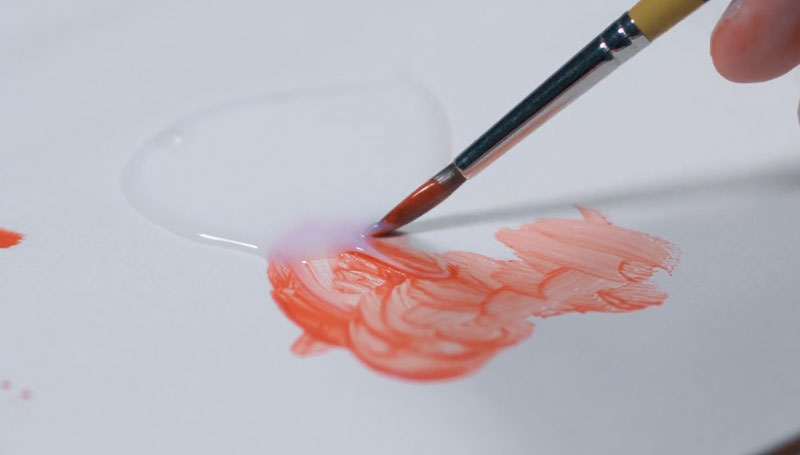
This is where glazing fluid steps in. Glazing fluid thins the paint, but since it has binder, it does not adversely affect the adhesion properties of the paint. This means that you can create very thin layers of color without worrying about each layer failing to stick to your surface.
When to Use:
- Use glazing fluid the you want to slightly alter the color with a layered translucent color
- Use glazing fluid with indirect painting where you want to add color without affecting the values established with an underpainting.
Slow Drying Medium (Retardant)
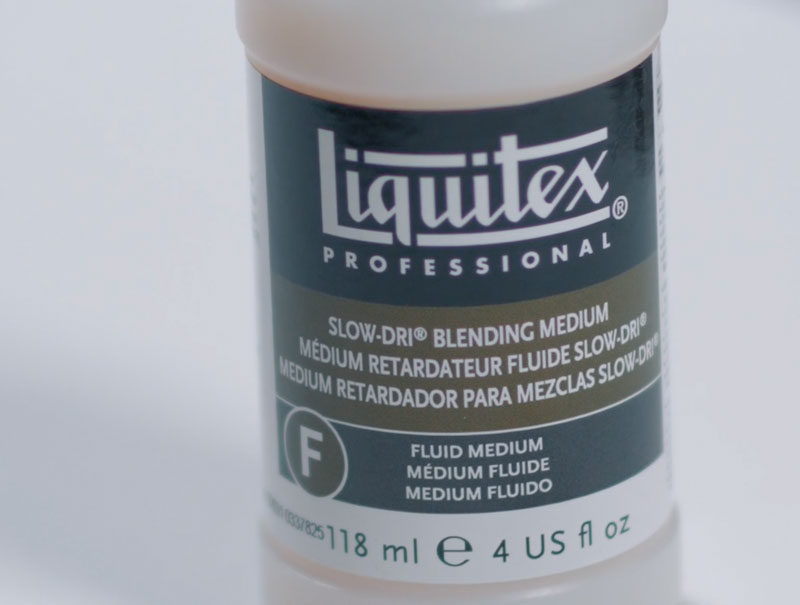
As you know, acrylics dry incredibly fast. There are clearly situations where this is an advantage, but many times it isn’t. One of the great things about oils, for example, is that you can manipulate them as they dry. This is because oils naturally dry very slowly. This allows you easily blend transitions between values and colors, working them until they are just right.
While acrylics can do this too, you have to work incredibly fast to pull it off.
Slow drying medium, as the name implies, slows the drying time of acrylic paint. This gives you a window of opportunity to make adjustments like blending or working in another color directly on the surface.
I when I say “a window of time” – I mean just a few minutes. Slow drying medium will not make acrylics behave just like oils, but they do give you a few more minutes of time to work those delicate and important transitions.
When to Use:
- Use slow drying medium when you need a few extra minutes of drying time to create smoother transitions between colors and values.
Some manufacturers produce Open Acrylics which dry at a much slower rate than traditional acrylics. These paints dry much slower than paint mixed with slow drying medium. Some colors may take a day or two to dry completely.
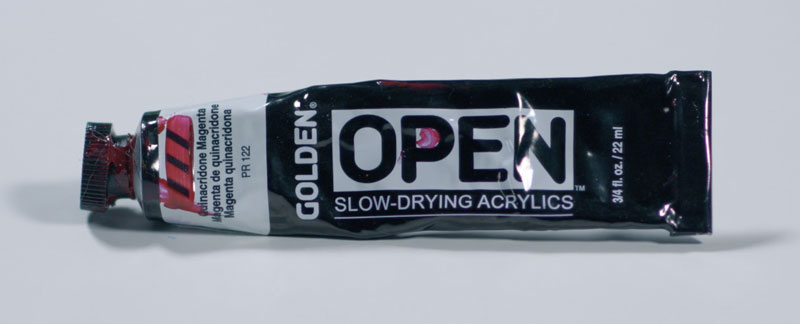
So if you’re doing a lot of blending and want your acrylics to behave more like oils, you may look into using these instead of using slow drying medium.
Acrylic Painting Mediums – Conclusion
So there you have it – a quick look at the acrylic mediums you will probably ever need. Of course, as I already mentioned, there are tons of them – each with their own benefit. But you don’t need them all. You may even find that you don’t need any at all. But if you wish to extend the versatility of this wonderful painting medium, then these mediums will do just that.
If so, join over 36,000 others that receive our newsletter with new drawing and painting lessons. Plus, check out three of our course videos and ebooks for free.


